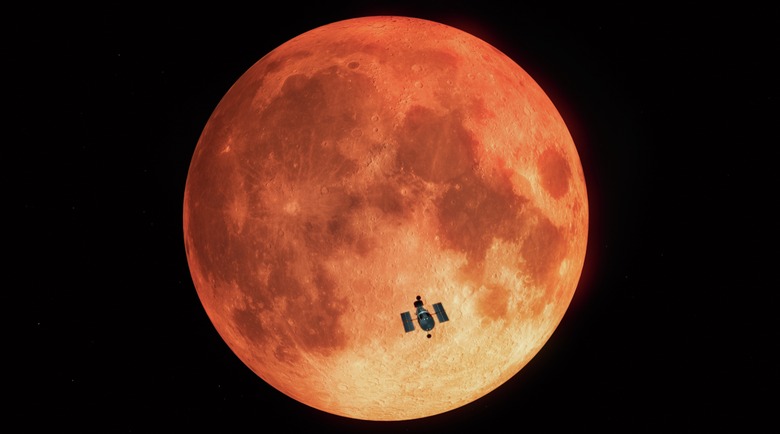Hubble Just Made A Major Breakthrough In The Search For Alien Life
- NASA used the sunlight beaming through Earth's atmosphere and bouncing off of the Moon to analyze our planet's atmosphere.
- The experiment was a sort of proof-of-concept that suggests we may be able to detect life on other worlds by analyzing the light passing through their atmospheres.
- In the distant future, missions to exoplanets may be determined by how likely they are to support life, based on what we can see from afar.
Hubble took advantage of a total lunar eclipse to do a bit of science that may one day be used to detect life on other worlds. As NASA reports in a new blog post and video, Hubble was able to use the Moon as a sort of "mirror" that reflected the light beaming through Earth's atmosphere. By analyzing the wavelengths of light coming through our planet's atmosphere and bouncing off the surface of the Moon, researchers were able to detect the presence of ozone in Earth's atmosphere.
We already knew that ozone surrounds the Earth, of course, but this observation was something of an experiment. The idea is that by analyzing the light coming through the atmospheres of distant exoplanets, we might be able to detect habitable worlds or even be confident that some of those planets are supporting life.
The experiment worked well, despite the challenges of measuring the light bouncing off of the Moon which has an uneven coloring. Proving that it's possible for the aging Hubble to detect the presence of ozone around Earth without even looking at it shows promise for more high-powered telescopes that will be tasked with examining exoplanets.
NASA explains:
Hubble did not look at Earth directly. Instead, the astronomers used the Moon as a mirror to reflect sunlight, which had passed through Earth's atmosphere, and then reflected back towards Hubble. Using a space telescope for eclipse observations reproduces the conditions under which future telescopes would measure atmospheres of transiting exoplanets. These atmospheres may contain chemicals of interest to astrobiology, the study of and search for life.
Astronomers have already used telescopes to examine the atmospheres of some exoplanets, but the targets of that work have typically been massive gas giants that are easier to analyze. Rocky worlds like Earth are much smaller, making it far more challenging to detect the light beaming through their atmospheres.
Because the makeup of Earth's atmosphere is the result of the planet being covered in plant life, it's thought that future observations of exoplanets could reveal similar things about distant worlds. If we hope to find life outside of our solar system, we're going to want to know which planets have the best odds of supporting life. This technique may be the best way to do that, and it would help us narrow down candidates for eventual missions outside of our own system, once we reach that level of technological might.
